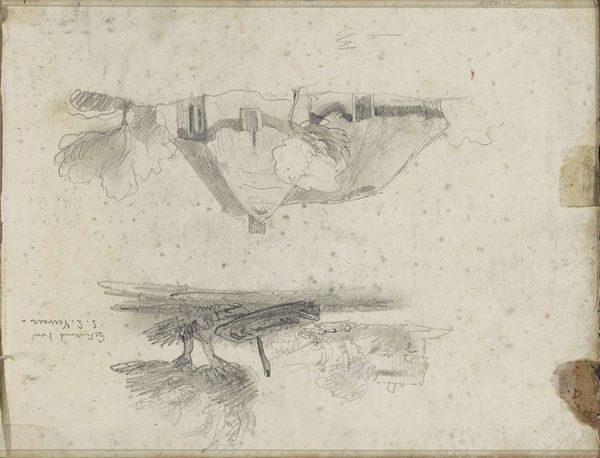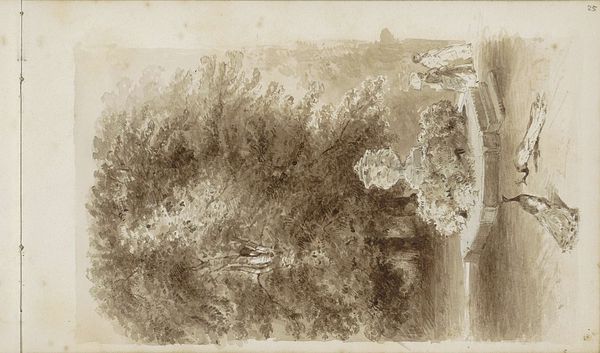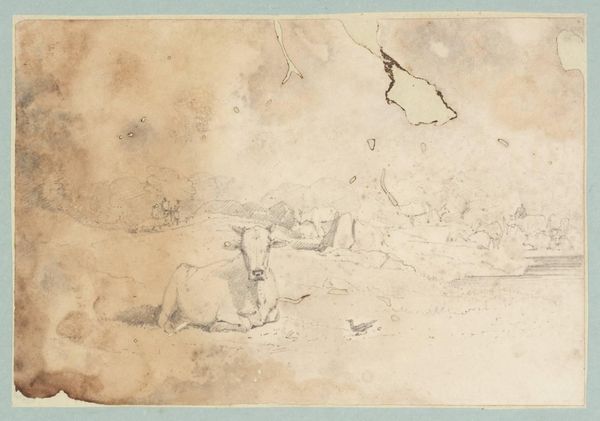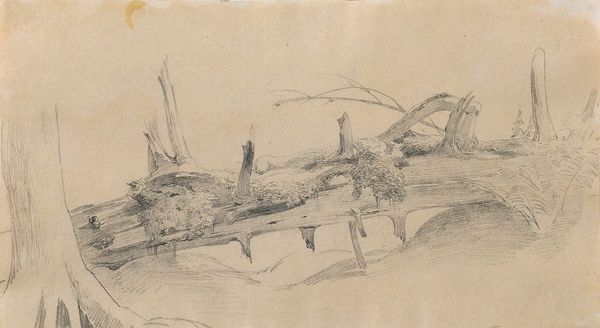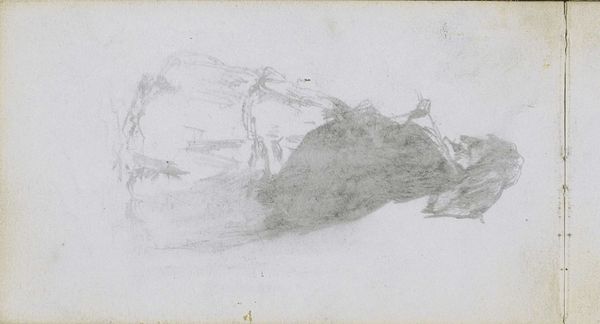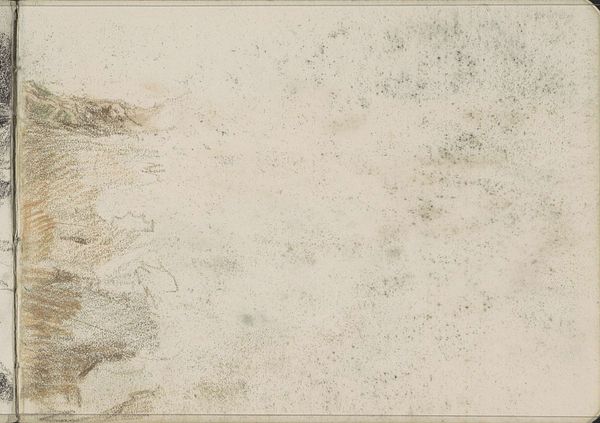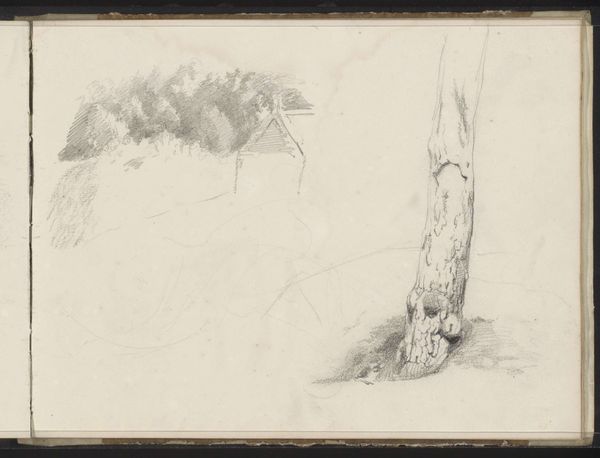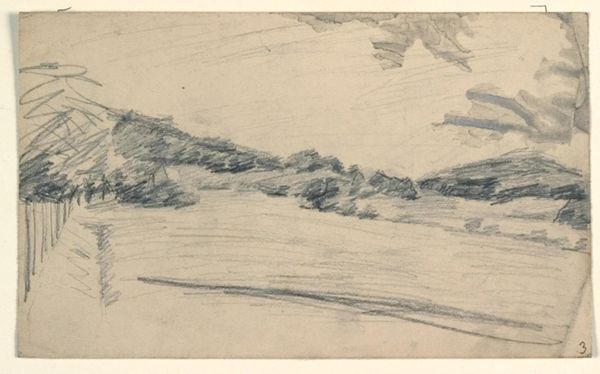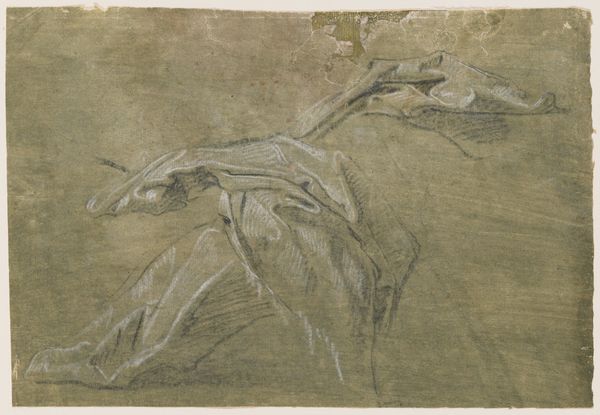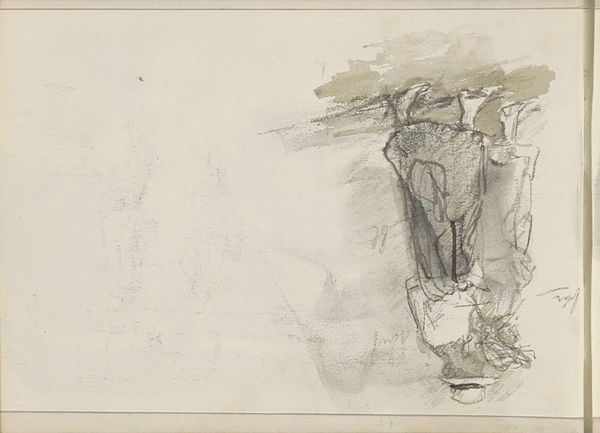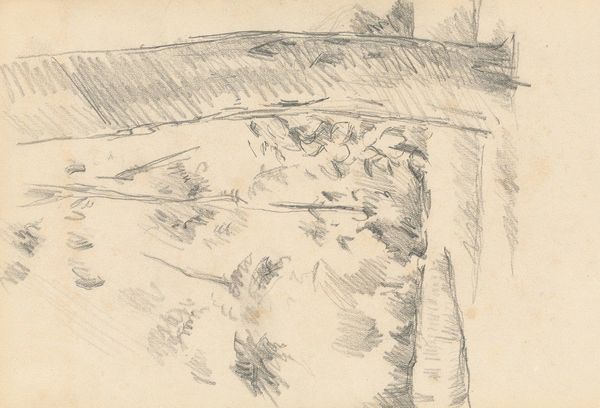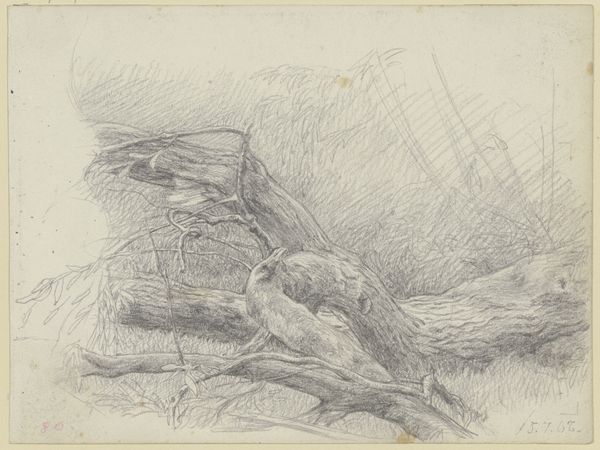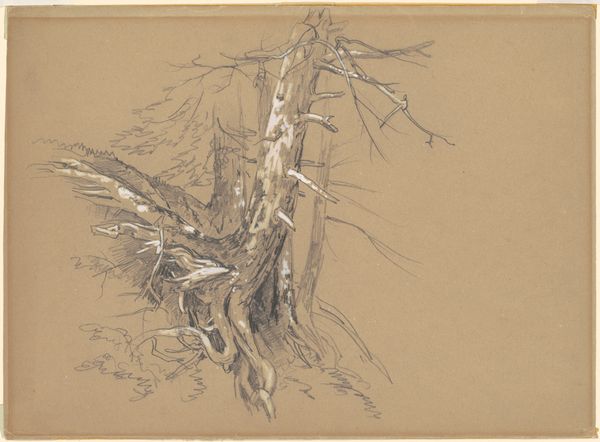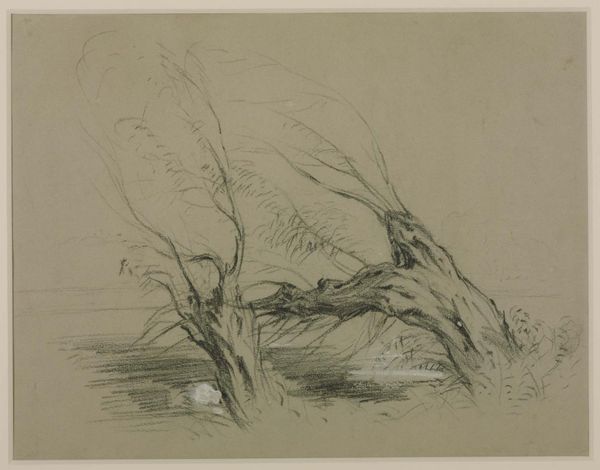
Copyright: Public Domain: Artvee
Editor: This is Winslow Homer’s "Tree Roots, Prout’s Neck," created in 1884 using charcoal. The stark contrast between the bleached roots and the dark, scratchy hillside creates a dramatic effect. What do you see in this piece? Curator: Well, let’s consider the materials themselves. Charcoal is a burnt material; here, it renders not just an image, but perhaps evokes the very process of decomposition and regeneration. The roughness contrasts with the smooth paper. How might the availability of charcoal and paper at that time have shaped Homer's practice and subject matter? Editor: That's interesting. I hadn’t thought about the accessibility of materials influencing the work itself. It feels very immediate, like a quick study, but maybe the choice of charcoal was deliberate. Curator: Exactly. Think about what charcoal represents: a residue, a byproduct of fire. Homer isn’t just depicting roots; he’s engaging with the very processes of nature, with growth and decay intertwined. What statement is Homer making through this use of material and process, connecting labor to this landscape? Editor: So, by focusing on the raw materials and the act of drawing itself, we can read the drawing as an engagement with the natural world and the labor involved in representing it? I never thought about it that way before. Curator: Precisely. By paying attention to material and context, we see Homer grappling with the social and natural forces that shape our perceptions. Editor: That gives me a lot to consider about not just Homer’s work but the art-making process in general! Thanks! Curator: My pleasure. Examining the materiality is crucial to seeing art as a cultural product.
Comments
No comments
Be the first to comment and join the conversation on the ultimate creative platform.
